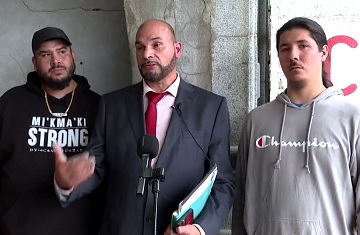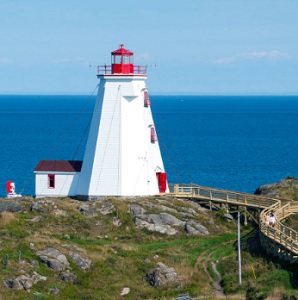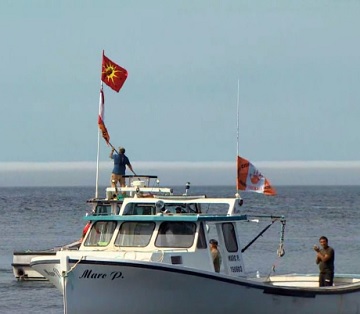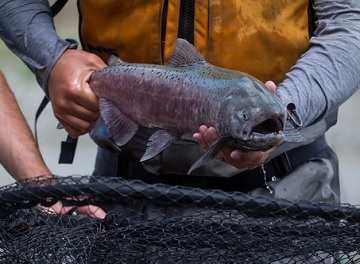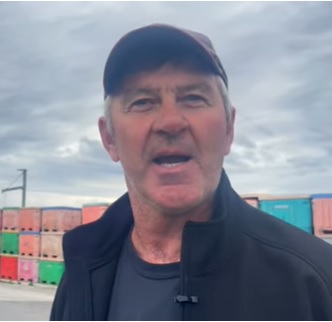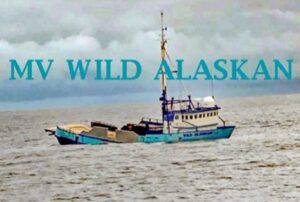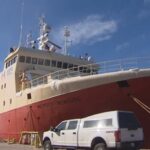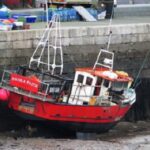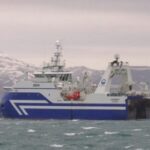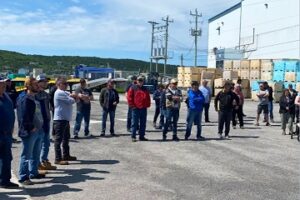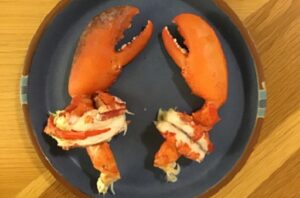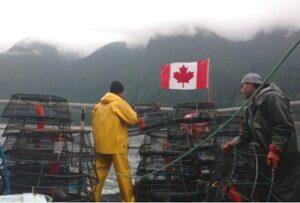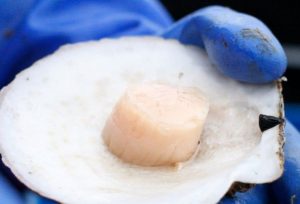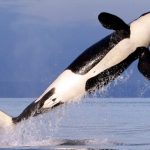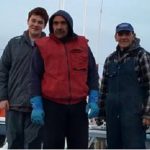Tag Archives: DFO
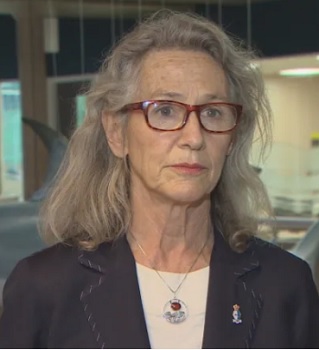
Feds tight-lipped on seal summit in Newfoundland
Five months after Canada’s Fisheries and Oceans minister Joyce Murray responded to the Atlantic Seal Science Task Team (ASSTT) report by saying she would hold a summit on seals there are few details about the event, other than the dates. The summit is being held in St. John’s, N.L., Nov. 8 and 9. So far there’s no word on the location of the summit, the lineup of speakers or panelists, or an agenda for the two days. A Sept. 23 release from the 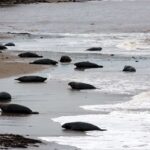 minister’s office offers very little information. That worries Bob Hardy, who was a member of the ASSTT. His main concern is that DFO appears to have organized the summit with little if any input from industry or stakeholders. >click to read< 15:53
minister’s office offers very little information. That worries Bob Hardy, who was a member of the ASSTT. His main concern is that DFO appears to have organized the summit with little if any input from industry or stakeholders. >click to read< 15:53
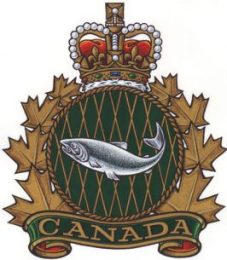
DFO says sorry after lobster lecture goes awry – “Simply leave them there”
While a storm of historic proportions was making landfall in Atlantic Canada, Fisheries and Oceans Canada decided it would be a good time to remind Canadians they’re not allowed to eat any lobsters they find on the shore. “Simply leave them there,” the government agency posted on Twitter. After a few hours of getting ridiculed on Twitter, Fisheries and Oceans deleted the Tweet and followed up with an apology. >click to read< 09:35
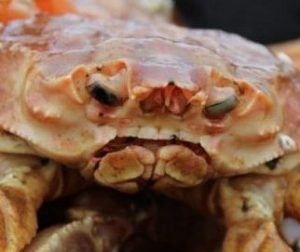
Atlantic Canada snow crab sales slowed to a crawl in 2022 according to latest export data
In 2021 crab fishing crews landed just over 39,000 metric tonnes. With an average price of $7.36 per pound the landed value that season was $623 million. There were expectations that N.L. harvesters might land a billion dollars’ worth of crab in 2022, thanks to record high prices of $7.60 at the start of the season, and DFO’s decision to increase the overall quota by 32 percent. However, global financial uncertainty precipitated by the Russian invasion of Ukraine, the end of virus economic stimulus packages in the United States and rising interest rates, lead to consumers scratching high priced seafood from their grocery lists. Just over a month into the season snow crab prices plummeted. >click to read< 12:37
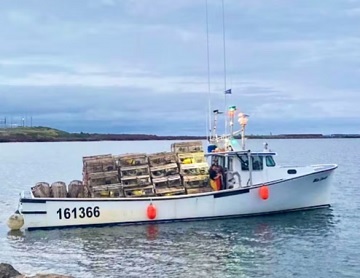
Prices down for Lennox Island, P.E.I. treaty fishery in fall season after challenges securing harbour
After opening with fewer than 300 traps in the spring of 2022, the band set the rest of its 1,000 traps on the south shore of P.E.I. this fall. Island fishers, though, have been facing the country’s highest inflation in that time, with costs for fishing expenses continuing to rise. And on top of that, prices have gone down since spring. Darlene Bernard, Lennox Island’s chief, says issues started with finding a harbour to launch the fall treaty lobster season. While the spring fishery opened in Lennox’s harbour without much issue, the fall fishery is on the Island’s south shore, where the band had to find a non-Indigenous harbour master willing to take them on. >click to read< 14:07
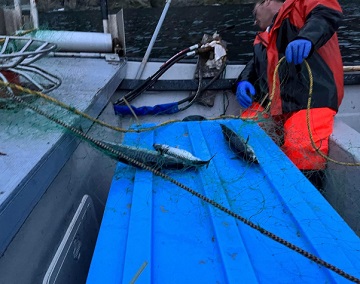
CLOSURE WITHOUT CAUSE: Unprecedented Levels of Mackerel Call into Question Minister’s Decision to Close Fishery
Fish harvesters throughout the province are reporting observations of unprecedented levels of mackerel, calling into question the decision by Minister Joyce Murray and the Department of Fisheries and Oceans (DFO) to close the commercial fishery this year. Harvesters are once again asking Minster Murray to take urgent action to reconsider the decision and undertake new survey opportunities to better understand the true health of the mackerel stock. Harvesters throughout the province have been sending in their observations and photos of mackerel schools and unprecedented levels of bycatch during other fisheries. >click to read the rest< 15:03
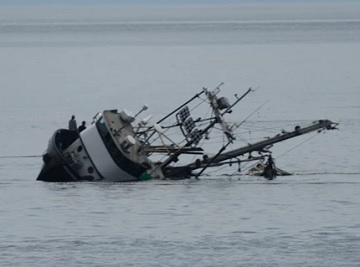
Efforts to remove sunken vessel near Victoria are difficult due to conditions
A small fishing vessel remains underwater two weeks after it sank off the coast of San Juan Island, Washington, and the U.S. Coast Guard says removal efforts are difficult due to strong water conditions. On Aug. 13, the Aleutian Isle sank near the U.S. Island — approximately 25.6 kilometers east of Victoria. Dumping an estimated 9,854 litres of diesel oil, sheen covered several kilometers of water and threatened marine life while sparking a joint response between U.S. and Canadian agencies. Video, >click to read< 09:06
Divers hope to wrap up work, raise sunken fishing vessel near San Juan Island soon – Two weeks after an oil spill began off the west side of San Juan Island, divers began work that will allow them to plug a sunken fishing vessel more than 200 feet below the surface. >click to read<
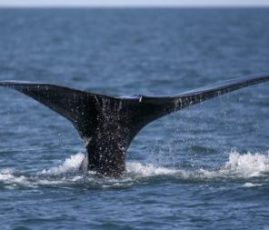
Planes can’t find entangled whale in search Wednesday
Planes and boats searched the Gulf of St. Lawrence on Wednesday, looking for a young North Atlantic right whale entangled in rope and other gear. An airplane saw the calf of a right whale known as 3720 last weekend, 48 nautical miles east of Shippagan, trailing fishing rope and buoys. The Department of Fisheries said at the time that it wasn’t known how long the yearling had been entangled. Whale expert Philip Hamilton of the New England Aquarium said lots of challenges come with finding a whale such as this one, which had previously last been spotted in March off Provincetown, Mass. (Where is the photo of the calf wrapped in fishing gear the plane didn’t take?!!) >click to read< 12:23
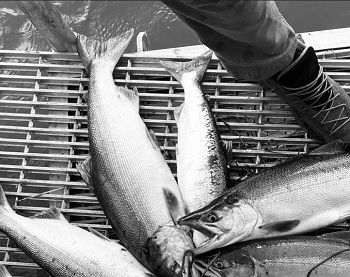
B.C. fishermen fume as their Americans counterparts fish
Commercial salmon fishers and environmentalists are crying foul, for opposite reasons after U.S. fisheries officials let American fishers hit the water while the Canadian government kept their counterparts ashore. After several years of historically low runs, the Pacific Salmon Commission (PSC), an international fisheries management organization, estimated last week that enough sockeye, about 4.4 million, would return to the Fraser River to support a commercial fishery. American fisheries managers adopted the commission’s estimate, opening a small commercial fishing window over the weekend. But in a rare disagreement, Canadian officials did not, citing concerns the run would be nearly one million fish smaller than predicted, and kept Canada’s waters closed. >click to read< 10:16
Concern for BC sockeye salmon as return estimates drop by millions – The Pacific Salmon Commission’s pre-season estimate of 9.8 million returning fish went down to 5.5 million Monday, prompting environmentalists and fishers alike to express concern. >click to read<
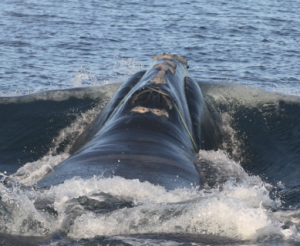
Entangled North Atlantic Right Whale spotted off Shippagan, N.B.
The federal Fisheries Department is on the lookout for an entangled North Atlantic Right Whale in the Gulf of St. Lawrence near Shippagan, N.B. The department says the whale was observed on Saturday by a Fisheries and Oceans Canada aircraft. The whale, which has been identified as the 2021 calf of the whale known as 3720, was spotted about 48 nautical miles east of Shippagan. Officials said they do not know the type of gear that the whale is entangled in, or where it came from. >click to read< 08:14
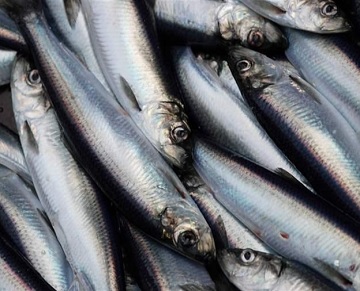
TAC goes from 12,000 to10,000 tonnes – Reduction to herring quota will impact Maritimes, Quebec
The quota for major parts of the herring fishery in the Maritimes and Quebec is being reduced in an effort to increase the stock. The total allowable catch for herring in the southern Gulf of St. Lawrence fishing zone, which includes parts of New Brunswick, Nova Scotia, Quebec and all of Prince Edward Island, is being cut from 12,000 tonnes to 10,000 tonnes. The fall herring stock in the area remains in the “cautious zone,” according to a statement released Friday by Fisheries and Oceans Canada. “The number of spawning adults is declining, and recruitment is at the lowest level ever observed,” DFO said. >click to read< 10:17
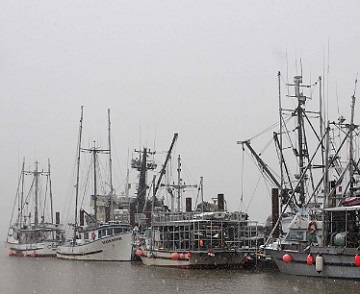
B.C. Commercial fishermen on tenterhooks
B.C. commercial fisherman, who had hoped for a green light today, now have to wait until next week for a go-ahead to fish for Fraser River sockeye, while American commercial fishermen are already catching sockeye. “They’re fishing on the American side, but we’re not fishing on the Canadian side,” said Mitch Dudoward, a commercial fisherman and spokesperson for the UFAWU-Unifor fishermen’s union. Returns so far appear to be healthy enough for a commercial opening this year, and fisherman had expected commercial openings to be announced today. But they now have to wait until Tuesday. >click to read< 9:16

Nova Scotia: Indigenous lobster fishermen not required to observe whale closure
A Department of Fisheries and Oceans fishery closure in Nova Scotia this week to protect endangered North Atlantic Right Whales will not apply to Indigenous lobster fishermen in the area. The department is allowing ceremonial lobster fishing in St. Marys Bay to continue, raising concerns about conservation and fairness. All commercial crab and herring fisheries with unattended gear in the water are being ordered out of St. Marys Bay effective 5 p.m. on Thursday, which is standard practice after sightings. Dan Fleck of the Brazil Rock 33/34 Lobster Association represents commercial fishermen in the area. He said he’s been getting calls from concerned fishermen this week. “I would expect that the rules would be applied fairly and equitably amongst all resource users,” Fleck said. >click to read< 08:01
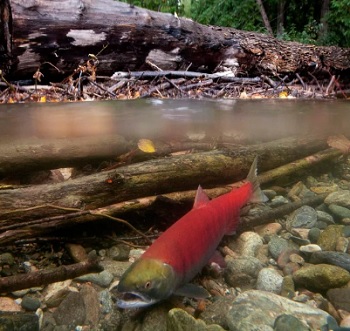
Commercial fishers and wild salmon advocates celebrate large returns to B.C. waters
Mitch Dudoward has worked in the salmon industry for more than 40 years and says fishing on the Skeena River in northwest B.C. has never been better. “This is the best season I can recall in my lifetime with the numbers we are catching,” said Dudoward, who recently completed a big sockeye haul aboard his gillnetter Irenda. Meanwhile, Bob Chamberlin, chairman of the First Nations Wild Salmon Alliance, said thousands of pink salmon are in Central Coast rivers after years of minimal returns. The strong run comes two years after the closure of two open-net Atlantic salmon farms in the area. “We got them removed and two years later we went from 200 fish in the river to where we have several thousand to date. In our mind and knowledge that is a really clear indicator.” >click to read< 10:41
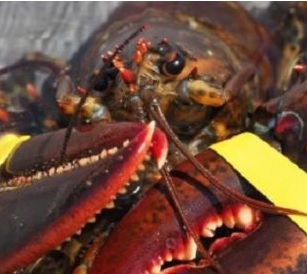
UPDATED – P.E.I. – Fall lobster season delayed by weather; Thursday opener confirmed.
The opening of P.E.I.’s fall lobster season has been delayed, according to the Department of Fisheries and Oceans. The season was scheduled to open in Lobster Fishing Area (LFA) 25 on Aug. 9 and close on Oct. 10, but DFO officials say the season won’t open until weather conditions improve. When opening is delayed, the season closes a day late up to a maximum of four days. In a Facebook post to members, the P.E.I. Fishermen’s Association said the opening will be delayed until at least Aug.11. >click to read< 18:08
P.E.I.’s fall lobster fishery to open Thursday – P.E.I.’s fall lobster season will open at 6 a.m. Thursday, the Department of Fisheries and Oceans has confirmed. >click to read< 17:27
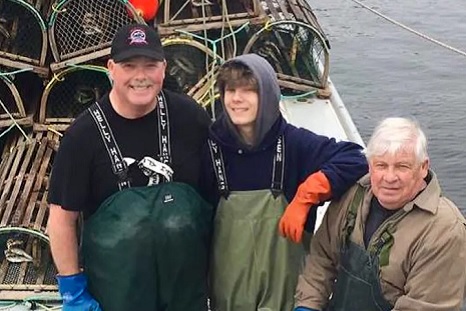
Regulations coming to Atlantic Canada could ensure safety of endangered right whales
Last month, Sierra Club Canada held a web discussion where it talked about the endangered North Atlantic right whale population in the Gulf of St. Lawrence and how new changes coming to the fishing industry could help protect them. DFO has been working to develop rope systems that are designed to release if too much force is applied suddenly. Currently, there are no regulations for fisherman to use low-bearing gear. Jenn Michael Lewis, who helps catch lobster in St. Peters Bay, said the response from fishermen in the community about the new rope regulations will likely be a negative one. “It has been a point of tension. There isn’t many right near St Peters Bay, many fishermen don’t see the point in switching,” Lewis said. >click to read< 08:10
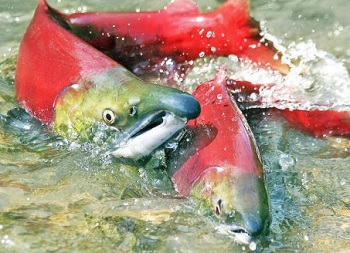
Prince Rupert fisherman frustrated by DFO salmon limits, despite millions of fish
Longtime marine fisherman Howard Gray is frustrated with the federal government’s management of the commercial sockeye harvest around Prince Rupert and afraid it will lead to two million dead fish that should have been caught in the ocean this year, he said on Aug. 3. Gray has been commercial fishing on the North Coast for more than 60 years, primarily harvesting salmon and herring. “A multi-million dollar travesty is happening as we speak. There’s going to be in excess of three million fish, sockeyes, going into the system, which is about two million more than there should be,” he said. Gray believes the rules that Fisheries and Oceans Canada (DFO) announced regarding the commercial sockeye fishery were not in line with the high number of fish returning this year. >click to read< 08:25
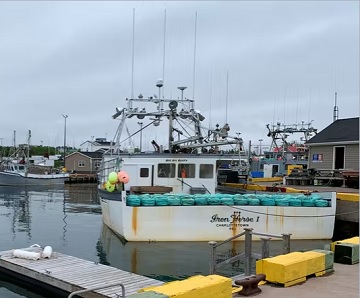
DFO investigation into snow crab catch irregularities in P.E.I. leads to court sentences
A Fisheries and Oceans Canada investigation into snow crab catch irregularities at the Souris wharf during the 2019 and 2020 seasons has concluded with several fishermen and two dockside observers being convicted and sentenced in P.E.I. provincial court in Georgetown. On July 28, Judge Nancy Orr dealt with the final matter before the court and found fishermen Leo Dorgan, 32, guilty of five charges under the Federal Fisheries Act for failing to hail-in, or report, as accurately as possible the weight of snow crab on board his fishing vessel the Black Diamond II. Dorgan pleaded not guilty and had a trial on July 21-22. He was fined a total of $11,000. >click to read< 12:27
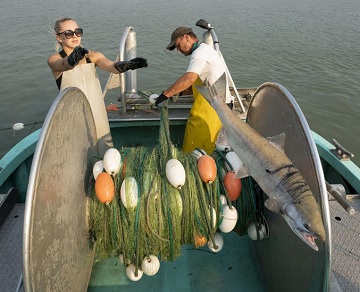
Strong sockeye salmon runs bode well for famed Fraser fishery
“The last bunch of years have just been nothing but doom and gloom when it comes to B.C. salmon,” said Granville-Island based fisher Steve Johansen, who just returned from “crazy” commercial fishing in Barkley Sound a week ago where sockeye returns were more than double Department of Fisheries and Oceans estimates. On the Skeena River, a key B.C. salmon river, returns have been 50 per cent higher than estimates. “I think everything else (that has) happened this summer before the Fraser runs is just making everybody’s anticipation and excitement just up a couple more notches,” Johansen said. >click to read< 12:50
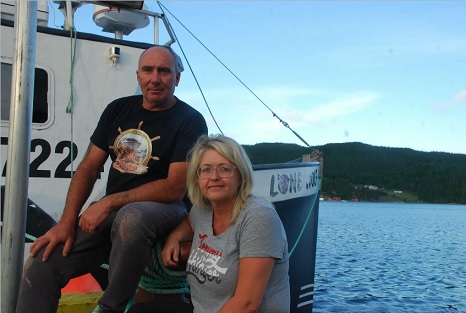
Multi-million dollar capelin fishery is a bust for eastern Newfoundland
The Lone Wolf is lying idle at the wharf in Hickman’s Harbour, Trinity Bay. The only sound is the lap of water against hull, the occasional screech of sea gulls flying past, hunting for food. Earlier this year the Department of Fisheries and Oceans (DFO) set a quota of around 15,000 metric tonnes for fishing zones from the south coast (area 3Ps) to the North East coast (2J, 3K and 3L zones). Inshore licenses, like the one the Marshes have, grant them just 12,000 pounds of crab. “This year we landed $82,000 worth,” she said. And that’s not a whole lot of money to pay a crew and cover the expenses of running a boat. “Last year I could fuel up my boat for $800,” she noted. “This year it costs $1600.” Capelin could have added another $30-40,000 to their seasonal revenue, making it the second most important fishery for their enterprise. But they’re not fishing it. Why not? It’s complicated. >click to read< 11:05
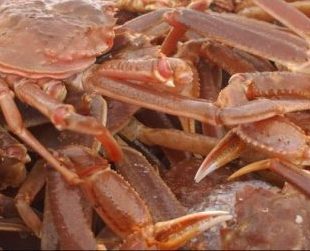
P.E.I. snow crab fishers fined for underreporting catch
Judge Nancy Orr expressed frustration at the low fines set out in the sentencing guidelines for this type of charge, saying the fines aren’t much of a disincentive if someone ends up being able to sell 20,000 pounds of snow crab that didn’t get reported as counting toward their quota. She made the remarks in relation to the sentencing of James Gavin. Court heard Gavin had an extensive record, with convictions dating back to 1995. Gavin was fined $2,500. The cases in Georgetown court Thursday followed a Department of Fisheries and Oceans investigation in Souris dating back to 2019 and 2020. It was called Operation Gannet. Both fishers and dockside monitors ended up being charged. >click to read< 08:57
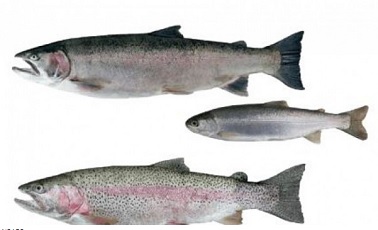
DFO Accused of Coverup. DFO suppressing research on steelhead
Thompson River and Chilcotin steelhead populations are teetering on the brink of extinction, according to the BC Wildlife Federation (BCWF), while the Department of Fisheries and Oceans continues to supress research that the BCWF believes would confirm that seals and bycatch are a big part of the problem. The BCWF has been hounding DFO since 2019 to release peer reviewed research upon which a special assessment by the Canadian Science Advisory Secretariat (CSAS) in 2018 was based. That assessment, Recovery potential assessment for Chilcotin and Thompson River Steelhead trout, is publicly available. The peer-reviewed research upon which it based is not, according to the BCWF. >click to read< 18:41
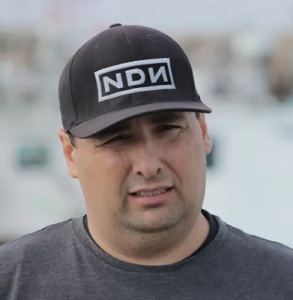
Removing DFO from Indigenous fishery negotiations an ‘integral’ step forward
Chief Mike Sack of the Sipekne’katik First Nation said the report, titled Peace on the Water, validates what he and his band have been saying about their right to fish since they launched a moderate livelihood fishery two years ago. The report calls for negotiations involving the Indigenous fishery to be handled by Crown-Indigenous Relations and Northern Affairs Canada, which Sack described as “the most integral” of the committee’s recommendations. “The treaty fishery model we presented over two years ago now is reinforced by each recommendation from the Senate,” Sack said in a statement. >click to read< 13:52

Prince Edward Island: Fishermen wary of new gear mandated by DFO to protect whales
The federal government is making it mandatory for fishing crews to use the new gear as of January 2023. The ropes are designed to break more easily so whales won’t become entangled and suffer injuries if they swim into it. Lobster fisher Charlie McGeoghegan said it’s causing some concern in the fishing community who wonders if the gear is safe to use, if it will be lost more easily and how much it will cost to replace. The P.E.I. Fishermen’s Association asked the Department of Fisheries and Oceans for an exemption for lobster fishers but was denied. >click to read< 07:50
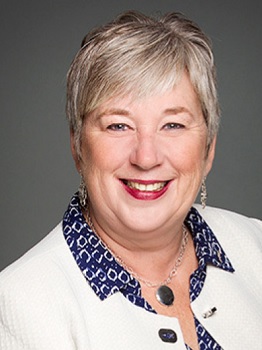
Did Ottawa truly understand the impacts of closing most salmon fisheries on the Pacific coast?
Twenty-one years ago, I married into a fishing family. Soon after, we started Skipper Otto to help connect customers with locally sourced and sustainably harvested seafood. The spring is always the busiest time. There are boats to prepare for the season, fishing nets to repair, staff to hire and operations to launch. At the end of June 2021, when boats had already left the docks and were on the fishing grounds, the federal government announced the closure of 60 per cent of salmon fisheries on the Pacific coast. Specifically, these closures affected commercial salmon fisheries and First Nations communal commercial fisheries. Bernadette Jordan, then minister of fisheries and oceans, announced the closures to reduce pressure on salmon stocks. >click to read< 08:42
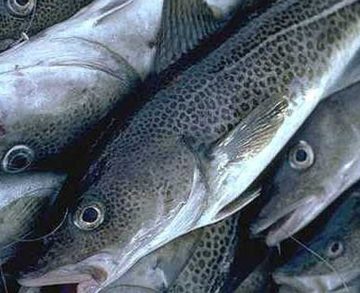
30 years after the moratorium, what have we really learned about cod and science?
“Although the industry has many problems, a shortage of fish is not one of them,” confidently pronounced the 1982 report of the Task Force on Atlantic Fisheries, which is commonly called the Kirby report. But a shortage of fish, as we now know, would become an insurmountable problem a decade later —so much so that on July 2, 1992, the federal government shuttered the commercial Northern cod fishery, once Canada’s largest fishery. So where have these vast learnings taken us 25 to 30 years on? Fisheries management remains highly dependent on modelling. >click to read< 17:28






